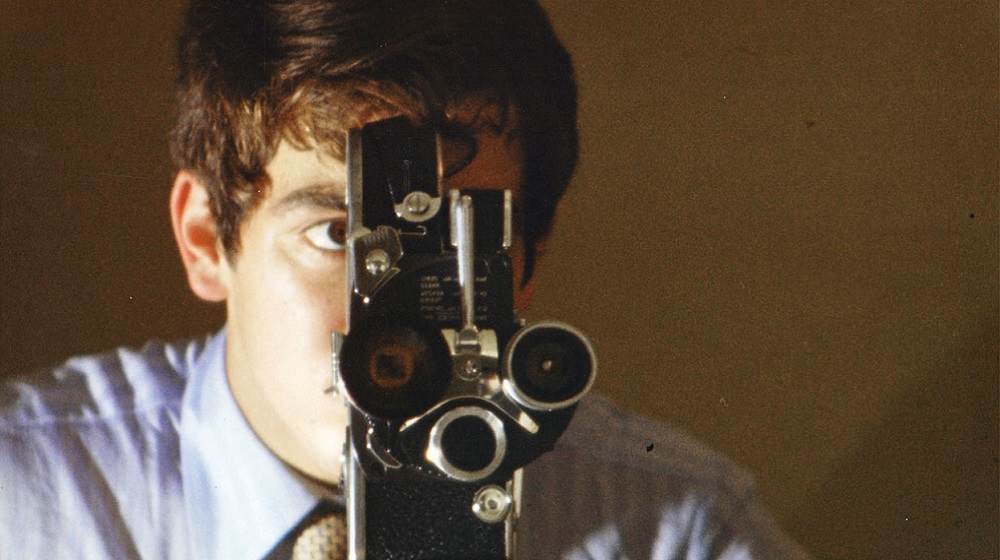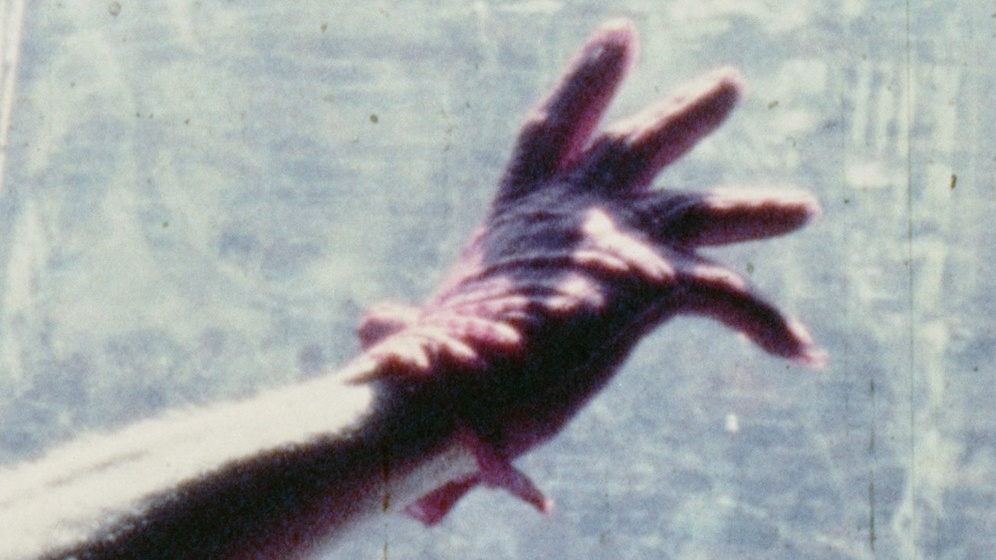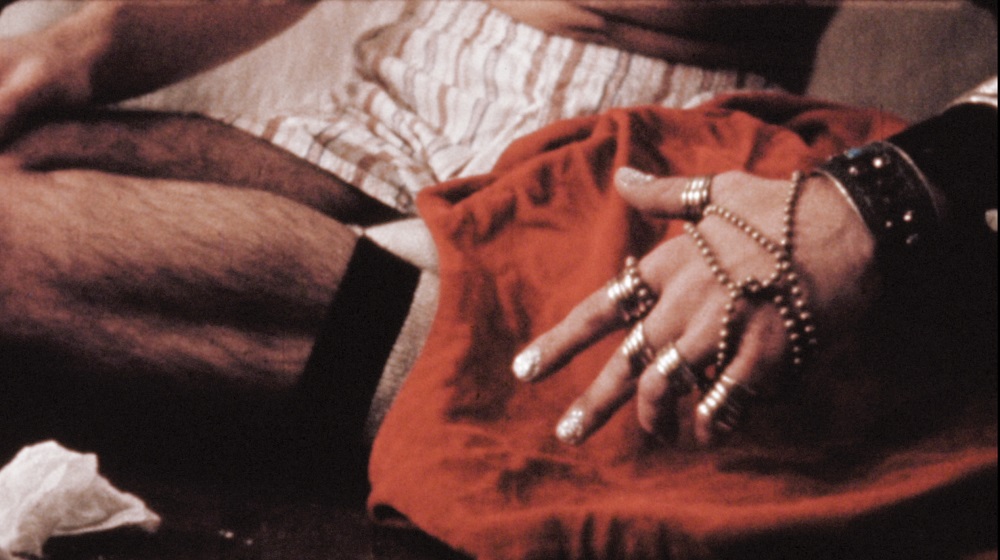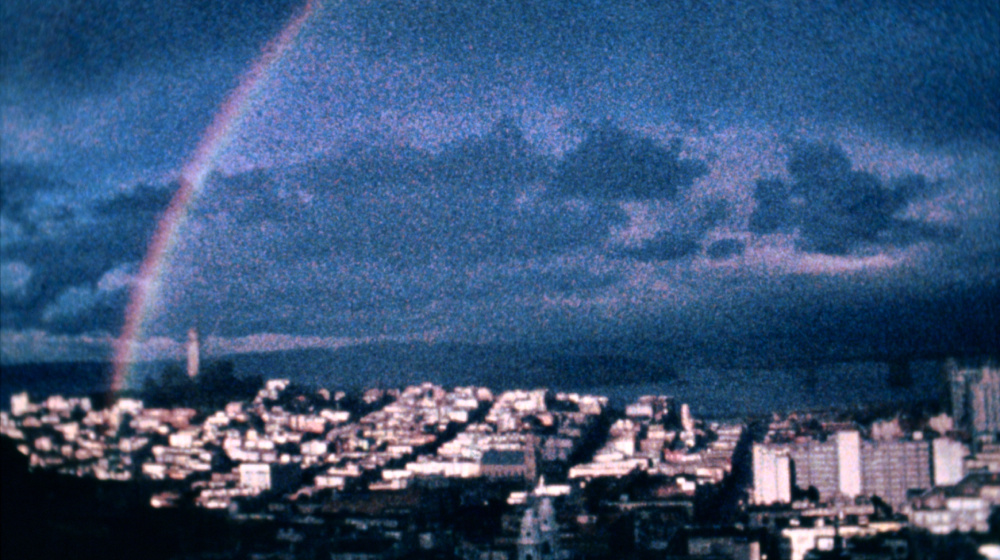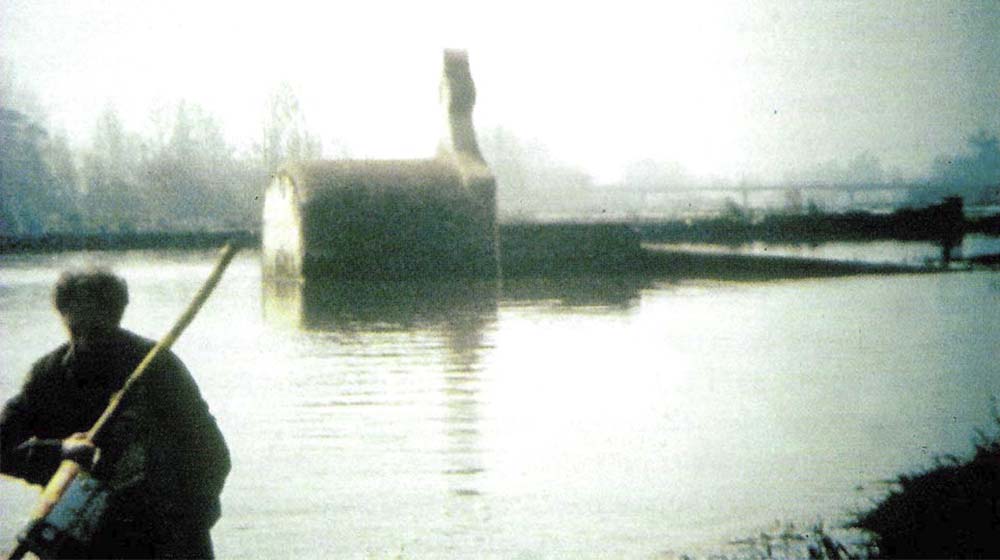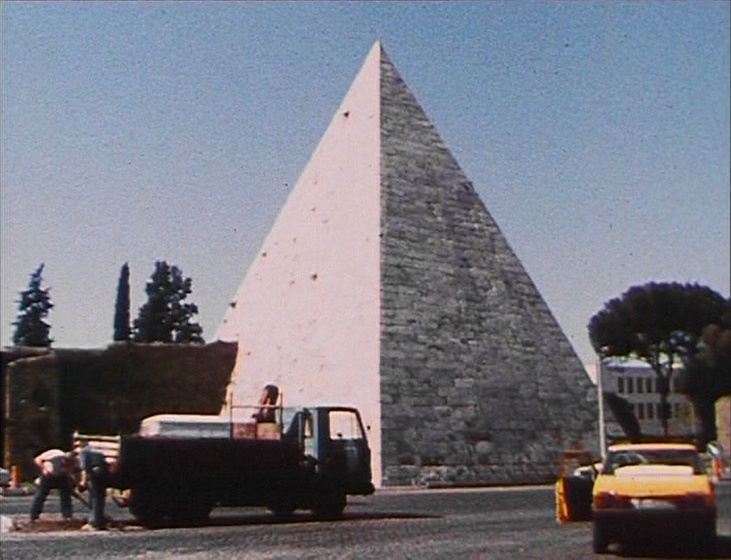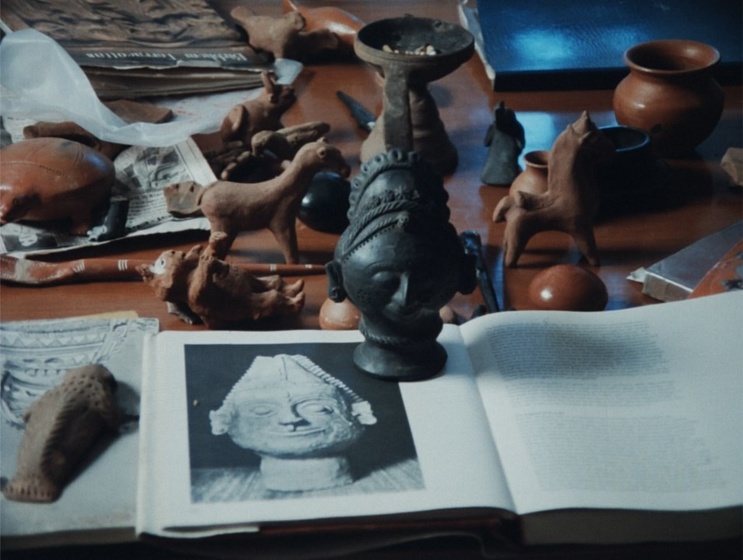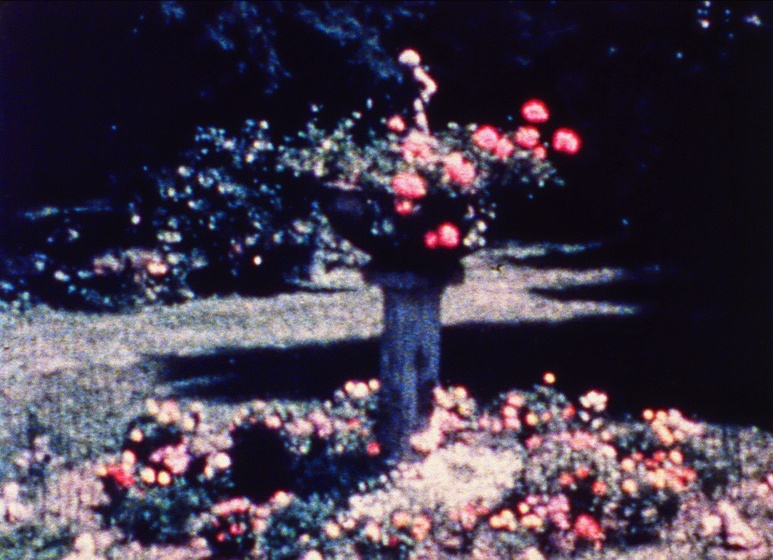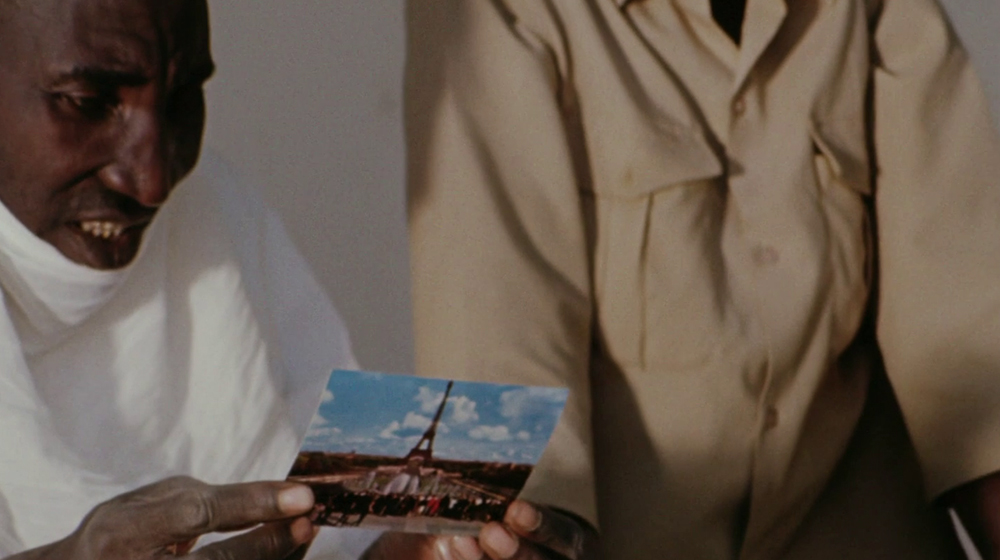Where and how did you meet Tom Chomont?
Gregory Markopoulos suggested that I meet Tom in Boston. It was at a moment when Tom had completed the transcription of Twice a Man and he was studying at Boston University for his Masters degree and working at the Park St. Cinema, while running his own private film society in Cambridge at the Odd Fellows Hall. I had left Deerfield Academy and had a job delivering advertising copy for a Boston newspaper. So I would meet Tom and watch whatever was playing in that cinema. I believe that he also showed me the hand-drawn storyboard that he was doing in preparation for his filming. He was very attached to Gregory and one of his main correspondents.
Was the footage for Spiracle, in which we see Chomont, the first thing you filmed in your life?
The very first 16mm film images that I ever filmed were 100 feet of Gregory, which I filmed in his apartment. Then I filmed 200 feet of my sister in the loft on the Bowery where I was living. Earlier in Spring 1966, I filmed 100 feet of my neighbor, Bernice Hodges, in Weymouth. All of these early exercises were to help me become acquainted with the Bolex camera.
I am certain that Spiracle was inspired by the films that I had been seeing and the few occasions when I accompanied Gregory, while he filmed the portraits in Galaxie or from listening to Tom speak about his own projects and by my experience of performing in Gregory ’s film, Eros, O Basileus. My starting point for Spiracle was a lyric and erotic impulse, to create a few simple and emblematic situations in or near the loft, where I was living on the Bowery.
Choices made at the beginning of my filmmaking continue to be important in different ways. For example, the choice of nudity for Spiracle or Winged Dialogue, is both spiritual and erotic and this balance of the spiritual and erotic is still at the core of my filmmaking, but I no longer use nudity directly.
In The Mirror Garden, the film by Chomont, we see you looking at light through filters. At what point did you start using masks?
I have no memory of this detail about my holding filters in The Mirror Garden. I would say that my first use of colored filters and masks was in filming for Winged Dialogue. I developed the use of filters placed in the filter slot between the lens and prism and filters placed in the compendium in front of the lens as a formal and expressive structure; together with the masks they controlled the space of the frame. There was always an element of chance or unpredictability in how the film emulsion would react to the filters with a particular light, and this is fascinating.
I also discovered that the mask shapes would appear and disappear as I changed the exposure. You can see how I played with the exposure of the small square mask in The Count of Days and the circle and dot in Palinode. I articulated my themes through the structure created by the interaction of the filter colors and geometric forms.
With Palinode, I attempted to join the change of focus with a sense of human breath as a source for the voice. It is as if the slow focus changes on the branches of a tree at St. Petershof or on the table in a Zurich restaurant were breathing in and out, while my singer, Derek Olsen is singing Frobenius's melancholy text about vanity and the rise and fall of the African kingdom of Wagadu.
What were your ideas regarding figures and portraiture in these early films?
Spiracle and my following film, Winged Dialogue, are essentially lyric and draw on subjective freedom; that is the impulse behind the gesture of raising the arms, of reaching out. Even in these earliest films, the challenge is to connect the interior life with the world. In some way, Tom Chomont represents me in Spiracle, and the use of superimpositions are my means of entering into the psyche. I chose locations near to where I was living on the Bowery and in the 11th Street apartment.
In the early films, I worked with a loosely symbolic narrative. Often one figure was at the center of each film… The writer, Stefan Sadkowski, in The Count of Days,or the singer, Derek Olsen in Palinode. It was a clear advance when I discarded that narrative framework. Other first impulses arethe use of the re-filmed strips of 16mm film at the end of Spiracle. I could see later segments in Early Monthly Segments or Diminished Frame (1970/2001) developing this idea of showing the film material, itself.
I stayed away from the physical beauty of a protagonist; the figures in my early films are isolated by age, nationality or sexuality. I now find this curious; it must have been a result of my own adolescence. I was nineteen or twenty years old when I made these films… but I was interested in creating such figures. Now I just remembered seeing Balthus ’s portraits of Juan Miró and his daughter or the one of Derain and his model at the Pierre Matisse Gallery in New York in 1966 or so. There is something in the atmosphere of these paintings that reminds me of my early films.
Another contributing factor in the making of these early films in Switzerland was that I did not speak German at the time, and yet I decided to use German texts. There is the text by Sadkowski in The Count of Days and the Frobenius text in Palinode. Each of these films reflecting indirectly on my early experience of Zurich.
The Count of Days and Palinode are less directly lyric and employ a sense of portrait/story, yet the source still comes from my own encounters or situation. It feels now like a step forward and a step backward; the films are less fragile and more ambitious. For these portrait/stories, I chose two individuals who had a life of the imagination as artists but I placed them in their aloneness, each in a sense exiled.
I recollect now how Gregory introduced me to the Eranos essays about myth, religion and psychoanalysis in New York, and when we settled in Zurich these subjects still had an influence on my filmmaking. I selected one of Freud ’s case studies as a source for The Count of Days and combined this with my other interest in dissection, which led me to use dissecting instruments to draw lines across the surface of the film frames. I approached Stefan Sadkowksi, whom I had heard about from the filmmaker, HHK Schoenherr, and asked to film him where he was living, then I filmed pages of his text, “Petermann verliess den Hinterhof,” with variations of colored filters. The young woman, Manuela, was working at the Bischofberger Gallery; I filmed her and Stefan in the gallery and her alone at the streetcar stop nearby. I do not remember how I met the boy, but he agreed to do the scenes in the main station and nearby. The choice of that location also came from the Freud case study.
For Palinode, I came to the composer, Wladimir Vogel, also through HHK Schoenherr; really I was grasping at whatever might make a film possible. Mr. Vogel was kind to me and made the introduction to the singer, Derek Olsen; I was not entirely scrupulous in cutting his Wagadu oratorio into fragments.
In Palinode and The Count of Days, we see reels that we recognize from Early Monthly Segments. In one of them, we see you editing film.
We see the second and third reels of My Hand Outstretched to the Winged Distance and Sightless Measure in which these two films are framed by “early monthly segments” in a chronology that gives an autobiographical context to the two films. One of these segments shows me editing The Count of Days.
All of the films were made with the 16mm color reversal film stock, Ektachrome Commercial. I edited the original footage directly without a work print. This is also shown in the supporting segment. It was a phase of my work in which I cut the strips of film into phrases to create a “harmonic mathematical pattern.” Originally, I worked on several bands of film and intended to superimpose them in the printing.
In the late 1980s, I cut apart all of the originals and re-edited, condensed and simplified each of the films and I placed them in the frame of the monthly segments. I had to work with the short phrases of film strips that I had created in the 1960s, but I reduced the amount of repetition to articulate the form more clearly. The first version of The Count of Days was circa 40 minutes and the version that you will see is approximately 17 minutes. Palinode is condensed in the same manner.
Was the filming of these short independent sequences ever done simultaneously with the filming of the larger projects?
The monthly segments were made parallel to the longer films and they hold a special place in how I see my own filmmaking. The formal invention and the life that is documented in them are balanced. I had left them unseen for decades as my filmmaking slowly matured and I went back to them at the moment when a major phase of my life was nearing completion. Some of the segments are trials or studies in preparation; others are codas to my completion of one of the longer films; then there are the portraits of Gregory and the one that documents one of Tom's visits in Zurich.
How would you describe the way the condensation of these films affected their soundtrack?
When I made The Count of Days and Palinode in 1969, I was still thinking of cutting the sound as I cut the image, with direct cuts in small units. I had access to a Nagra recorder but little experience in how to use it, and I did not know how the sound might accompany the image and bring a different vitality. I would rely upon a sound studio to transfer my recorded sound to 16mm magnetic tape, then I would edit the sound on an editing table in two or three days at the film lab. The rhythm of the film had been created by the edited image, and my sound edit echoed this. Later I realized that the sound was too aggressive and I tried to reduce it to the essential but it is still a montage.
Excerpts of an interview by Francisco Algarín Navarro and Carlos Saldaña. Check out the complete interview in Lumière's website.
